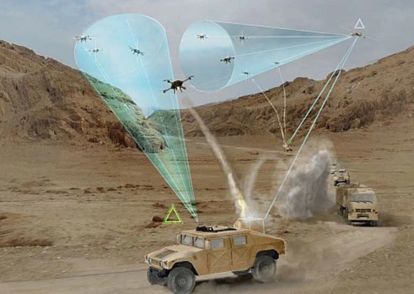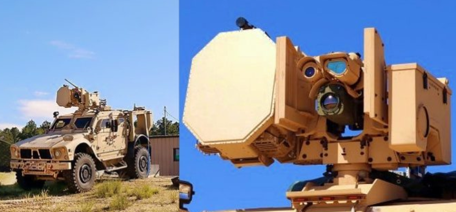US Army Prepares To Test New Anti-Drone BLADE System To Defend Against Drone Swarms
A new report from the U.S. Army Combat Capabilities Development Command states that the Ballistic Low Altitude Drone Engagement (BLADE) prototype is ready to conduct further trials to protect high-value military assets from small unmanned aerial system attacks.
The BLADE is a dome of protection that uses a set of systems to combat against small drone attacks, can be mounted on various tactical vehicles providing troops and military assets with close-range protection.
The BLADE is integrated with the Common Remotely Operated Weapon Station (CROWS) and uses advanced fire control and precision targeting enablers to detect, track, and defeat small drones. CROWS includes a sensor suite and fire control software that allow soldiers to engage targets remotely. CROWS tracks targets with several sensors, including a camera and thermal optics. The new system can be stationary or mounted on most tactical vehicles.
Once the BLADE identifies and locks onto a target, it will fire an electronic attack on small incoming drones with short bursts of fire.
A successful test occurred earlier this summer at Fort Dix, New Jersey, proved the new system is ready for additional, more rugged field tests against drone swarms.
BLADE is expected to be mounted on M1 Abrams tanks, M2 Bradley infantry fighting vehicles, and Stryker wheeled armored fighting vehicles.
The Army said BLADE is at “final Level 6 technology readiness demonstration for the BLADE system will be conducted later this year.”
“Technology readiness levels refer to the maturity of a technology and range from Level 1 to Level 9. Level 6 is a model or prototype that has been tested in an operational environment, such as an aircraft or vehicle. Once we get a technology to the point where it can transition out of CCDC, which is typically Level 6, it transitions to program managers and program executive offices who make the technology a program of record, which means funding has been approved so the program can move forward.”
The proliferation of small drones on the modern battlefield, especially in Syria, and more recently, the Saudi Aramco drone/cruise missile attack over the weekend, have allowed terrorist organizations to exploit defense gaps in lower altitude air space.
The first instance of where small drone attacks became very alarming was in Syria early last year. When terrorists strapped bombs to a swarm of small drones and attacked the Russian Khmeimim airbase.
In August of last year, a drone packed with explosives detonated near Avenida Bolívar, Caracas, where Nicolás Maduro, the President of Venezuela, was addressing the Bolivarian National Guard.
Venezuelan President Nicolas Maduro unharmed after an assassination attemp by drones pic.twitter.com/AMBZTEu6An
— China Xinhua News (@XHNews) August 5, 2018
Earlier this year, Houthi rebels used an explosive-packed drone to target Yemen’s military leaders at an army parade.
The moment Houthi suicide drone exploding above the dias of the Saudi backed Yemeni army parade: pic.twitter.com/qhjH1RkG2J
— Carl Zha (@CarlZha) January 10, 2019
Then over the weekend, a highly disruptive small drone attack, claimed by the Houthi rebels, knocked out 5.7 million barrels per day (bpd) of total Saudi oil output, which equates to about half of their production – causing oil prices across the world to spike.
Massive fires at 2 Saudi Aramco oil facilities caused by drone attacks – Riyadhhttps://t.co/HRA4TpGP8Tpic.twitter.com/ljc5AC7aMI
— RT (@RT_com) September 14, 2019
All of these incidents prove that the rapid proliferation of small drones on the modern battlefields and across the world have created a significant defense gap that companies, corporations, and militaries are rushing to fix. The solution could be the BLADE.
Tyler Durden
Fri, 09/20/2019 – 21:25
via ZeroHedge News https://ift.tt/2V7AStf Tyler Durden

